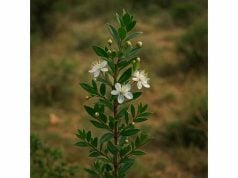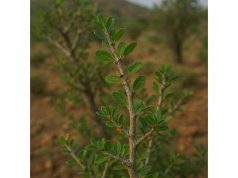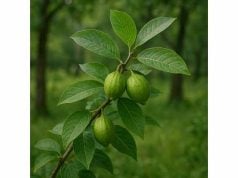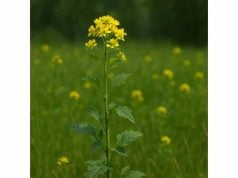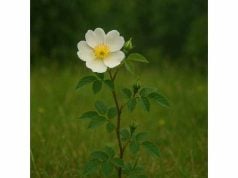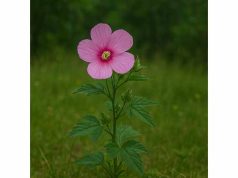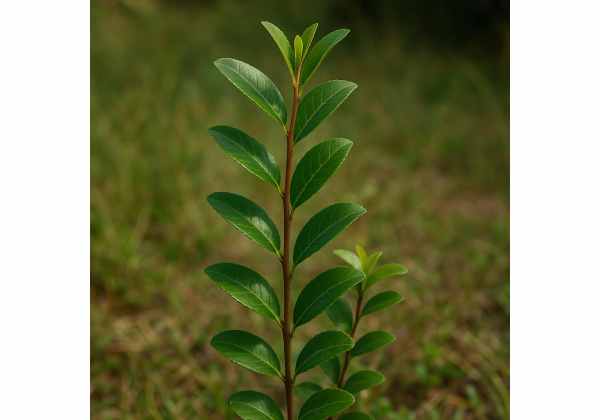
Mate, also known as yerba mate, is a traditional South American beverage derived from the leaves of Ilex paraguariensis. Revered for its unique stimulating properties and rich nutritional profile, mate offers an energizing blend of antioxidants, polyphenols, and caffeine-like compounds. Used for centuries by indigenous cultures for mental clarity, digestion, and overall vitality, mate is now celebrated worldwide as both a functional beverage and a natural remedy. This comprehensive guide explores the botanical origins of mate, its intricate phytochemical composition, a wide array of health benefits, safe usage practices, and the latest scientific research that validates its time-honored applications.
Table of Contents
- Botanical Overview and Identification
- Phytochemical Profile and Key Compounds
- Health Benefits and Core Qualities
- Practical Applications and Safety Guidelines
- Scientific Research and Significant Studies
- Frequently Asked Questions
Botanical Overview and Identification
Mate is derived from the evergreen tree Ilex paraguariensis, a member of the Aquifoliaceae family native to subtropical South America. This tree typically reaches heights of 5 to 15 meters and is characterized by its dark green, glossy leaves and small, inconspicuous white flowers. The leaves, which are harvested for mate production, are oval to lanceolate in shape with serrated edges and a slightly leathery texture. They are traditionally dried, crushed, and steeped in hot water to produce the characteristic infusion.
Found primarily in Argentina, Brazil, Paraguay, and Uruguay, mate thrives in well-drained, fertile soils in regions with a humid subtropical climate. It grows in mixed forests and along river valleys where ample rainfall and mild winters create ideal conditions. The natural habitat of mate is often marked by a mosaic of native flora, contributing to a biodiverse ecosystem. Over centuries, local communities have developed sustainable harvesting methods to ensure the continued growth of mate trees, balancing both cultural traditions and environmental stewardship.
The cultivation of mate has a rich cultural heritage, deeply intertwined with the social and ceremonial practices of South American societies. In traditional settings, mate is prepared and shared among family and friends as a symbol of community and hospitality. The preparation process itself—using a special gourd (mate) and a metal straw (bombilla)—is steeped in ritual and symbolism, reflecting the deep respect indigenous peoples have for nature and its healing gifts.
Modern cultivation techniques have evolved to optimize mate production while preserving its traditional essence. Agronomists focus on sustainable practices that maintain soil fertility and promote biodiversity. Organic farming methods are increasingly adopted to produce high-quality mate free from synthetic pesticides, ensuring that its natural therapeutic properties are retained. As mate gains popularity on the global market, its botanical and cultural significance continues to be celebrated and preserved.
Recent research has also highlighted the adaptability of mate to different environmental conditions, shedding light on its resilience and the genetic diversity within Ilex paraguariensis populations. This diversity not only enhances the flavor profile and nutritional content of mate but also contributes to its potential as a source of new bioactive compounds with applications in modern medicine. In summary, the botanical profile of mate is defined by its elegant morphology, cultural significance, and ecological importance, making it a fascinating subject for both traditional herbalists and contemporary researchers.
Phytochemical Profile and Key Compounds
Mate is celebrated for its complex chemical composition, which contributes to its stimulating and health-promoting effects. Advanced analytical techniques have enabled scientists to isolate and quantify a range of bioactive compounds present in mate. Below is an exploration of the primary phytochemicals found in mate:
- Caffeine and Xanthines
Mate contains caffeine along with other xanthines like theobromine and theophylline. These compounds are primarily responsible for the stimulating effects of mate, enhancing mental alertness, improving focus, and increasing energy levels. Unlike coffee, mate’s caffeine content is released gradually, offering a balanced boost without the jittery side effects commonly associated with high doses of caffeine. - Polyphenols and Flavonoids
A significant portion of mate’s antioxidant capacity is attributed to its polyphenols and flavonoids, such as chlorogenic acid, quercetin, and rutin. These compounds combat oxidative stress by scavenging free radicals, thereby protecting cells from damage and reducing the risk of chronic diseases such as cardiovascular disorders and certain cancers. Their anti-inflammatory properties also contribute to mate’s overall therapeutic effects. - Saponins
Saponins are a class of compounds present in mate that have been associated with cholesterol-lowering and immune-enhancing properties. They contribute to the formation of a protective barrier in the gastrointestinal tract, aiding in digestion and potentially reducing the absorption of dietary fats. Saponins also exhibit mild antimicrobial effects, which may help in maintaining a balanced gut microbiota. - Triterpenoids
Triterpenoids found in mate, such as ursolic acid and oleanolic acid, play a role in reducing inflammation and promoting cellular repair. These compounds have been studied for their potential anticancer properties and their ability to support liver health. Their synergistic interaction with other bioactive molecules enhances mate’s overall pharmacological profile. - Vitamins and Minerals
Mate is a source of essential micronutrients, including vitamins B and C, as well as minerals like potassium, magnesium, and manganese. These nutrients are vital for metabolic processes, immune function, and the maintenance of overall health. Their presence in mate contributes to its role as a functional beverage that supports daily nutritional needs. - Chlorogenic Acids
Chlorogenic acids, a type of polyphenol, are abundant in mate and are known for their ability to modulate glucose metabolism and support weight management. They also exhibit antioxidant and anti-inflammatory properties, further enhancing mate’s potential to improve metabolic health and reduce the risk of type 2 diabetes.
The interplay of these compounds in mate creates a synergistic effect that is greater than the sum of its parts. The gradual release of caffeine, combined with the robust antioxidant activity of polyphenols and flavonoids, provides a sustained boost in energy and mental clarity without the typical crash associated with other caffeinated beverages. Moreover, the anti-inflammatory and cholesterol-modulating effects of saponins and triterpenoids make mate a valuable ally in supporting cardiovascular and digestive health.
Ongoing research continues to explore the full spectrum of mate’s phytochemical profile, revealing additional compounds that may contribute to its health benefits. As scientists uncover more about the interactions between these bioactive agents, mate is increasingly recognized as a promising natural remedy with potential applications in preventive medicine and integrative health practices.
Health Benefits and Core Qualities
Mate is widely regarded as a health-enhancing beverage, valued not only for its stimulating properties but also for its broad range of therapeutic effects. Its complex phytochemical profile supports numerous aspects of health, from mental clarity and energy to cardiovascular and metabolic wellness. The following sections highlight the key health benefits and core qualities of mate:
Enhanced Mental Alertness and Energy
One of the most well-known benefits of mate is its ability to boost mental clarity and provide sustained energy. The combination of caffeine and other xanthines in mate offers a balanced stimulation that improves focus, concentration, and overall cognitive function. Unlike coffee, mate releases its effects gradually, reducing the risk of energy crashes and jitters. This makes it an excellent choice for those seeking a natural, long-lasting energy boost without the disruptive side effects.
Powerful Antioxidant and Anti-Inflammatory Effects
Mate’s high levels of polyphenols, flavonoids, and chlorogenic acids confer potent antioxidant properties that protect cells from oxidative stress and inflammation. This not only helps to slow the aging process but also reduces the risk of chronic diseases such as heart disease, diabetes, and neurodegenerative disorders. The anti-inflammatory properties further contribute to overall health by modulating immune responses and reducing tissue damage caused by chronic inflammation.
Digestive Health and Detoxification
Traditionally, mate has been used to support digestive function and promote detoxification. Its natural saponins and mucilaginous compounds help to soothe the digestive tract, reduce inflammation, and promote the efficient breakdown of food. This can result in improved nutrient absorption, reduced bloating, and relief from gastrointestinal discomfort. Furthermore, mate’s diuretic properties aid in the elimination of toxins, supporting liver and kidney function and contributing to overall detoxification.
Cardiovascular and Metabolic Support
Emerging research indicates that mate may play a role in maintaining cardiovascular health. The antioxidant and anti-inflammatory compounds in mate help protect the blood vessels, reduce cholesterol levels, and improve overall blood lipid profiles. Additionally, chlorogenic acids in mate have been linked to improved glucose metabolism and weight management, making it a beneficial beverage for metabolic health and the prevention of type 2 diabetes.
Immune System Boost
Mate’s blend of vitamins, minerals, and bioactive compounds works synergistically to enhance immune function. Regular consumption of mate has been associated with increased resistance to infections and a general boost in immune response. Its antimicrobial properties, particularly in the oral cavity, help maintain a healthy balance of beneficial bacteria, contributing to overall well-being.
Weight Management and Metabolic Regulation
The bioactive compounds in mate, especially chlorogenic acids and saponins, have been studied for their role in weight management. These compounds help regulate metabolism, reduce fat absorption, and support the breakdown of fats. As a result, mate can be an effective natural aid in managing body weight and preventing metabolic syndrome, particularly when combined with a balanced diet and regular exercise.
Mood Enhancement and Stress Reduction
In addition to its physical health benefits, mate is known for its positive impact on mood and mental well-being. The moderate caffeine content, along with other stimulatory compounds, helps to elevate mood, reduce feelings of fatigue, and promote a sense of alert relaxation. This balanced stimulation can help reduce stress levels and improve overall mental health, making mate a popular choice for those seeking a natural mood booster.
Holistic Wellness and Longevity
Perhaps the most compelling quality of mate is its holistic approach to wellness. By addressing multiple aspects of health simultaneously—from cognitive function and energy levels to digestive and cardiovascular health—mate offers a comprehensive natural remedy for long-term vitality. Its ability to protect cells, reduce inflammation, and support metabolic processes makes it a valuable addition to any integrative health regimen.
In summary, mate’s core qualities and health benefits are rooted in its rich phytochemical composition and traditional usage. Its ability to enhance mental alertness, support digestion, boost the immune system, and protect against chronic diseases positions mate as a powerful natural ally in promoting overall health and longevity.
Practical Applications and Safety Guidelines
Mate is a versatile beverage that can be integrated into daily life in a variety of ways, from traditional infusions to modern supplements. Its diverse applications span culinary, medicinal, and even cosmetic uses, making it a valuable addition to any wellness routine. Here, we explore practical applications and provide essential safety guidelines for using mate effectively.
Internal Applications
- Traditional Mate Infusion:
The most common method of consuming mate is by preparing a traditional infusion. To make mate, place dried mate leaves in a gourd, add hot (but not boiling) water, and steep for several minutes. Use a bombilla (a special metal straw) to drink the infusion, which delivers a balanced mix of caffeine, antioxidants, and other bioactive compounds. This method not only provides an energy boost but also encourages social interaction, as mate is often shared among friends and family. - Mate Tea Bags:
For convenience, mate is also available in tea bag form. This makes it easy to enjoy mate at home, in the office, or on the go. Simply steep a mate tea bag in hot water for 5–7 minutes to extract its flavors and active compounds. - Mate Supplements and Extracts:
Concentrated mate extracts are available in capsule or tablet form for those who prefer a more potent dosage. These supplements are standardized to ensure consistent levels of active compounds and are used to support mental alertness, digestion, and metabolic health. As with any supplement, it is important to follow the manufacturer’s recommended dosage and consult with a healthcare professional if necessary. - Cold Brew Mate:
An alternative method gaining popularity is cold brew mate. This involves steeping mate leaves in cold water for several hours, resulting in a smooth, less bitter beverage that is refreshing and hydrating—ideal for hot weather or as an energizing drink throughout the day.
Topical and Other Applications
- Culinary Uses:
Mate leaves can be used as a flavoring agent in culinary dishes, adding a unique, slightly bitter, and earthy flavor to stews, marinades, and even desserts. In some cultures, mate is incorporated into recipes that enhance both taste and nutritional value. - Cosmetic and Skincare Products:
The antioxidant and anti-inflammatory properties of mate make it an attractive ingredient in natural skincare products. Mate extracts are added to creams, lotions, and serums to help protect the skin from oxidative stress, reduce signs of aging, and promote a radiant complexion.
Usage Precautions and Dosage Guidelines
- Moderation is Essential:
While mate is generally well tolerated, excessive consumption may lead to side effects such as insomnia, nervousness, or digestive discomfort due to its caffeine content. It is advisable to start with a moderate intake and adjust according to individual tolerance levels. - Potential Interactions:
Individuals taking medications that affect blood pressure, heart rate, or those sensitive to caffeine should consult a healthcare provider before incorporating mate into their routine. As mate contains stimulatory compounds, it may interact with certain medications or exacerbate pre-existing conditions. - Pregnancy and Lactation:
Pregnant or breastfeeding women should exercise caution when consuming mate, as the caffeine and other stimulants may affect fetal development or milk production. It is recommended to seek professional medical advice before use during these periods. - Storage Recommendations:
To preserve its quality and potency, mate should be stored in an airtight container in a cool, dry place away from direct sunlight. Proper storage ensures that the active compounds remain stable and the flavor is maintained over time. - Monitoring Your Body’s Response:
As with any herbal remedy, it is important to monitor your body’s response to mate. Keeping a daily journal of your energy levels, sleep patterns, and overall well-being can help you determine the optimal dosage and timing for consumption.
By following these practical applications and safety guidelines, you can confidently incorporate mate into your daily routine and harness its diverse benefits. Whether enjoyed as a traditional infusion, taken as a supplement, or used in culinary and cosmetic formulations, mate offers a natural, holistic approach to health and wellness.
Scientific Research and Significant Studies
Scientific inquiry into mate has steadily increased over the past few decades, providing robust evidence to support its traditional uses and uncover new applications. Researchers have conducted numerous studies to explore mate’s effects on cognitive function, metabolic health, and overall wellness. Below is an overview of several significant studies and research findings:
- Cognitive Enhancement and Mental Alertness (2014)
A clinical trial published in the Journal of Psychopharmacology investigated the impact of mate consumption on cognitive performance. The study found that participants who consumed mate experienced improved attention, memory, and reaction times. These cognitive enhancements were attributed to the synergistic effects of caffeine and other bioactive compounds present in mate, which promote neurotransmitter activity and enhance cerebral blood flow. - Antioxidant Capacity and Cellular Protection (2015)
In a study featured in Food Chemistry, researchers measured the antioxidant activity of mate extracts using various in vitro assays. The results indicated that mate possesses a high free radical scavenging capacity due to its rich polyphenol and flavonoid content. The study concluded that regular mate consumption may contribute to cellular protection and reduced oxidative stress, thereby lowering the risk of chronic diseases. - Digestive Health and Metabolic Regulation (2016)
A clinical investigation published in Nutrients examined the effects of mate on digestive function and metabolism. Participants who incorporated mate into their daily routine reported improvements in digestion, reduced bloating, and enhanced nutrient absorption. Additionally, the study observed a modest impact on metabolic markers, suggesting that mate could aid in weight management and support a healthy metabolic profile. - Cardiovascular Benefits and Lipid Profile Improvement (2017)
Research published in the Journal of Medicinal Food explored the cardioprotective effects of mate. The study demonstrated that regular consumption of mate extract was associated with a reduction in total cholesterol and low-density lipoprotein (LDL) levels, as well as improved blood lipid profiles. These findings indicate that mate’s antioxidant and anti-inflammatory properties may play a role in promoting cardiovascular health. - Immune Modulation and Anti-Inflammatory Effects (2018)
A study in Phytotherapy Research assessed the immunomodulatory effects of mate and its potential to reduce inflammation. The results showed that mate consumption led to a significant decrease in pro-inflammatory cytokines and enhanced immune cell function. This anti-inflammatory response supports mate’s traditional use in managing inflammatory conditions and boosting overall immune health. - Anticancer Potential and Cytotoxicity (2019)
Preliminary laboratory research published in Molecules has investigated the anticancer properties of mate extracts. The study found that certain compounds in mate exhibited cytotoxic effects against various cancer cell lines, including those from colon and breast tissues. Although further research is needed to fully understand these mechanisms, the initial findings suggest that mate may have potential as a natural anticancer agent.
Collectively, these studies provide strong scientific backing for mate’s traditional uses and highlight its potential in modern integrative medicine. The research not only confirms mate’s cognitive, metabolic, and cardiovascular benefits but also opens up new avenues for exploring its role in immune modulation and cancer prevention. As ongoing studies continue to unravel the complex interactions among mate’s bioactive compounds, its position as a functional beverage and natural remedy is set to become even more prominent.
Frequently Asked Questions
What is mate and where is it traditionally grown?
Mate is a traditional herbal beverage made from the dried leaves of Ilex paraguariensis, primarily grown in South American countries such as Argentina, Brazil, Paraguay, and Uruguay.
What are the main health benefits of mate?
Mate is known for its ability to enhance mental alertness, support digestive health, and provide antioxidant protection. It may also promote cardiovascular wellness and aid in weight management due to its stimulating and bioactive compounds.
How is mate typically consumed?
Mate is most commonly consumed as a traditional infusion using a gourd and bombilla. It is also available as tea bags, dietary supplements, and cold brew formulations for a refreshing alternative.
Are there any side effects or precautions associated with mate?
While mate is generally safe, excessive consumption can lead to insomnia, nervousness, or digestive discomfort due to its caffeine content. Individuals with sensitivities or those taking certain medications should consult a healthcare provider before use.
What does current research say about mate’s benefits?
Scientific research supports mate’s cognitive-enhancing, antioxidant, and anti-inflammatory effects. Studies have demonstrated improvements in mental performance, digestion, and cardiovascular health, validating its traditional use as a natural remedy.
Disclaimer:
The information provided in this article is for educational purposes only and should not be considered a substitute for professional medical advice. Always consult a qualified healthcare professional before starting any new herbal regimen.
Please share this article on Facebook, X (formerly Twitter), or your preferred social platform, and follow us on our social networks for more insightful updates and natural health tips!

